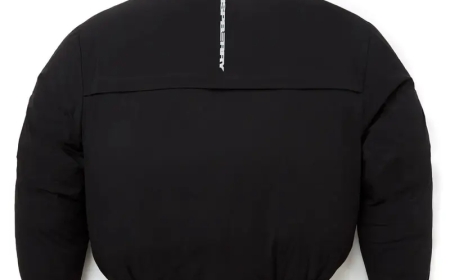Shadi Biodata Format for Boys and Girls
Explore our comprehensive Shadi biodata formats tailored for boys and girls. Make your matrimonial profile stand out with essential details and appealing design.

In Indian culture, marriage is more than just a union between two individualsits a sacred alliance between families. One essential part of arranged marriages is the creation of a well-crafted shadi biodata. For both boys and girls, this document serves as the first impression in front of potential matches and their families. A well-structured shadi biodata format reflects not only your personal information but also your values, lifestyle, and expectations from a life partner.
In this article, we will walk you through everything you need to know about the perfect shadi biodata format for boys and girls. Whether you are preparing it for the first time or updating an existing one, this guide will help you create a document that stands out.
What Is a Shadi Biodata?
A shadi biodata (marriage biodata) is a concise document used in the Indian matrimonial system to introduce a potential bride or groom. Think of it as a resume for marriage, where key details about a persons background, interests, and expectations are shared with prospective matches and their families. A good biodata can initiate a conversation, spark interest, and build the foundation for a potential relationship.
Why a Gender-Specific Format Matters
Boys and girls often include different sets of information in their marriage profiles, reflecting both societal expectations and individual preferences. For instance, while a boys biodata might emphasize his profession, salary, and career goals, a girls biodata may focus more on education, family values, and personal interests. While these differences are slowly evolving, acknowledging them can help tailor your biodata to meet traditional expectations while also staying modern and personal.
Essential Sections in a Shadi Biodata Format
Whether you are a boy or a girl, your biodata should include certain essential components. Here's a breakdown:
1. Basic Information
Include:
-
Full Name
-
Date of Birth and Age
-
Height and Weight
-
Religion and Caste
-
Mother Tongue
-
Marital Status (Unmarried, Divorced, Widowed)
-
Nationality
These are standard elements in most shadi biodata format templates. Make sure to verify this section for accuracy, as errors here can lead to misunderstandings.
2. Family Background
This section provides insight into your upbringing. Include:
-
Father's Name and Profession
-
Mother's Name and Profession (if applicable)
-
Siblings and their details
-
Family Location and Status
Its not necessary to go overboard. Just a paragraph or bullet list giving an overview of your family is enough.
3. Educational Qualifications
List your academic journey:
-
Highest Degree
-
College/University
-
Additional Certifications (if any)
For boys and girls alike, this is a key section. Education is often a critical factor in Indian matrimonial decisions.
4. Professional Information
Include:
-
Current Job Title
-
Employer Name
-
Years of Experience
-
Income (optional but often included)
For boys, this section tends to be heavily scrutinized, especially when families are seeking stability and success. However, for girls who are career-oriented, its equally important to present this confidently.
5. Lifestyle and Interests
Here you can showcase your personality:
-
Hobbies
-
Languages Known
-
Food Preferences
-
Travel Habits
-
Social Habits (Drinking, Smoking)
Including this adds life to your biodata and helps potential matches understand your daily life and values.
6. Partner Preferences
Mention what you're looking for in a life partner:
-
Age Range
-
Education Level
-
Caste (if applicable)
-
Location Preferences
-
Personality Traits or Values
Its important to strike a balance between being specific and open-minded. Avoid rigid statements and focus on core values.
Online Tools for Creating Shadi Biodata
In todays digital age, many platforms help create marriage bio data online. These tools offer downloadable templates, easy editing options, and even customizable themes based on your community or profession.
Some well-known Indian matrimonial platforms also provide built-in biodata builders. This is especially useful for people looking to share their profile quickly and securely online.
Tips for an Impressive Biodata
-
Be Honest: Accuracy is crucial. Avoid exaggerations in education, income, or family details.
-
Keep It Updated: Update your biodata regularly if you change jobs, move cities, or complete new qualifications.
-
Use Simple Language: A bio data for marriage simple in tone is more readable and appealing.
-
Limit to One Page: Unless needed, try to keep your biodata concise.
-
Attach a Good Photo: A clear, well-lit, and recent photograph is a must.
-
Proofread: Double-check for spelling errors and grammar.
Digital vs. Physical Biodata
While the traditional printed biodata is still used, many families now prefer a simple biodata for marriage in digital formespecially when sharing via WhatsApp, email, or matrimonial apps.
Digital formats (like PDF or Word) are easy to edit and can be customized with colors, headings, and even community-specific designs. They are also easier to store, forward, and archive.
Final Thoughts
Creating the perfect shadi biodata format for boys and girls is about finding the right balance between tradition and personalization. It should reflect who you areyour background, goals, and valueswhile also being respectful of the expectations of Indian families. Whether youre a boy highlighting your career and lifestyle or a girl showcasing your education and values, your biodata can open doors to meaningful conversations and lasting relationships.

































